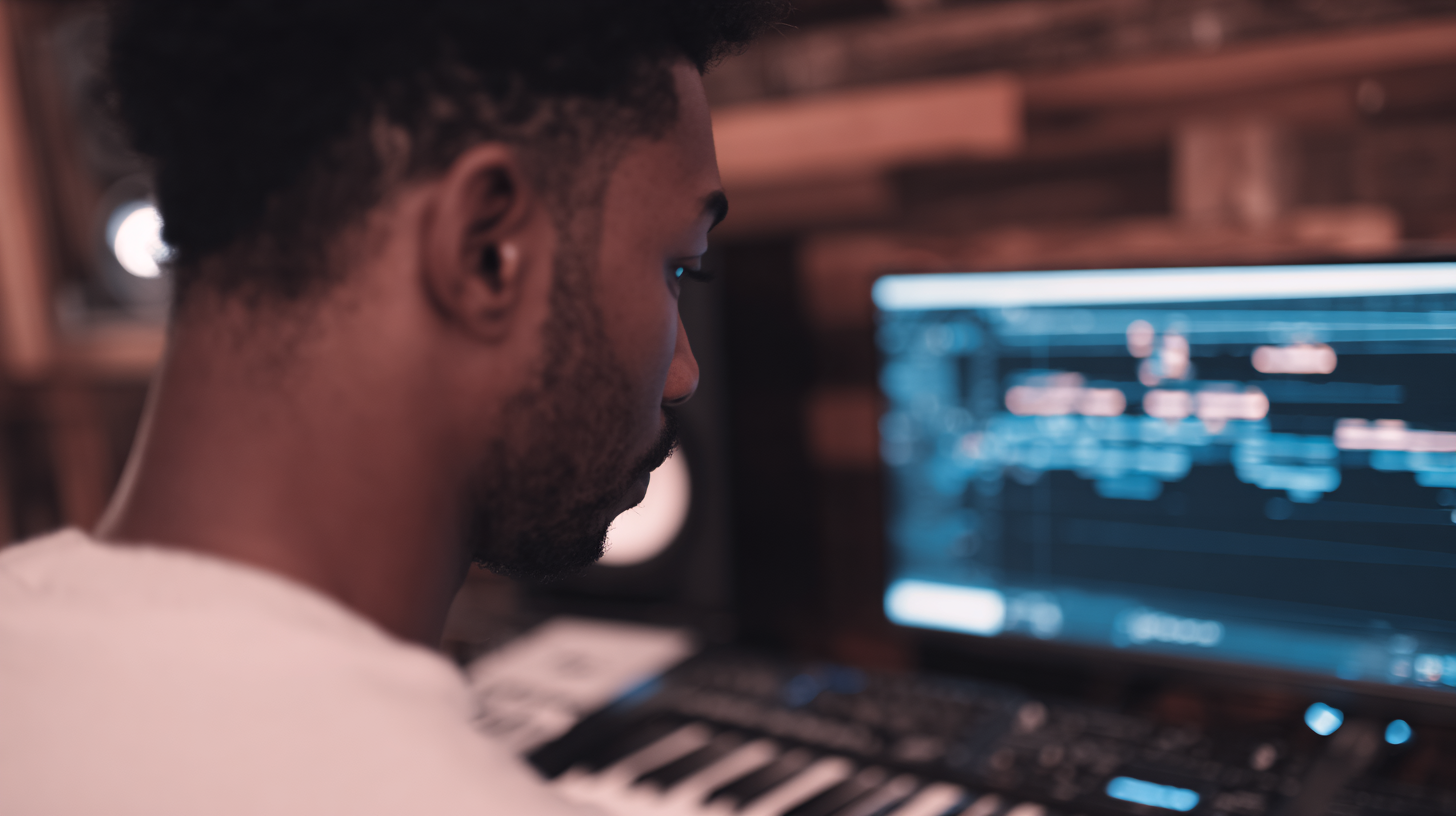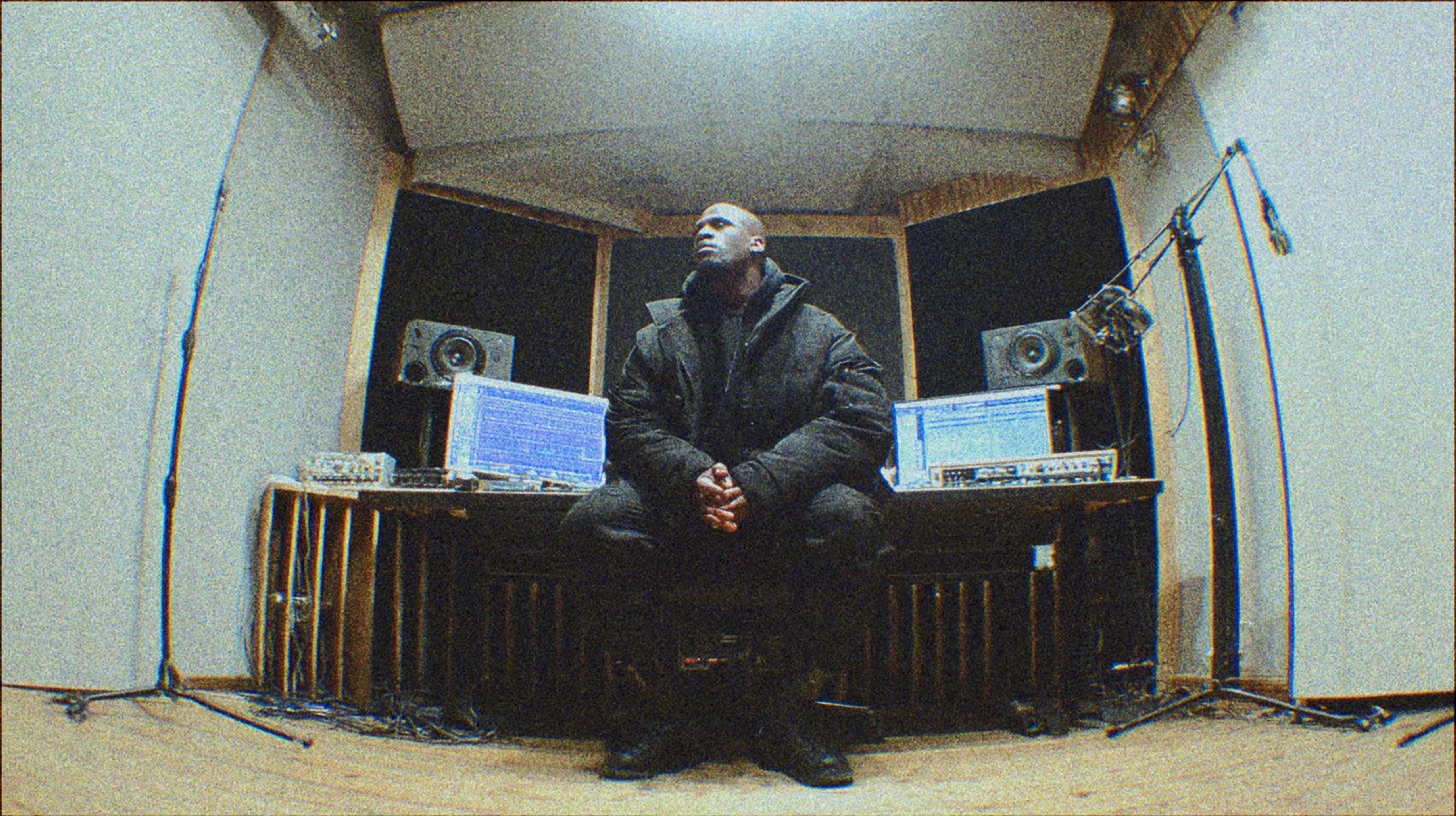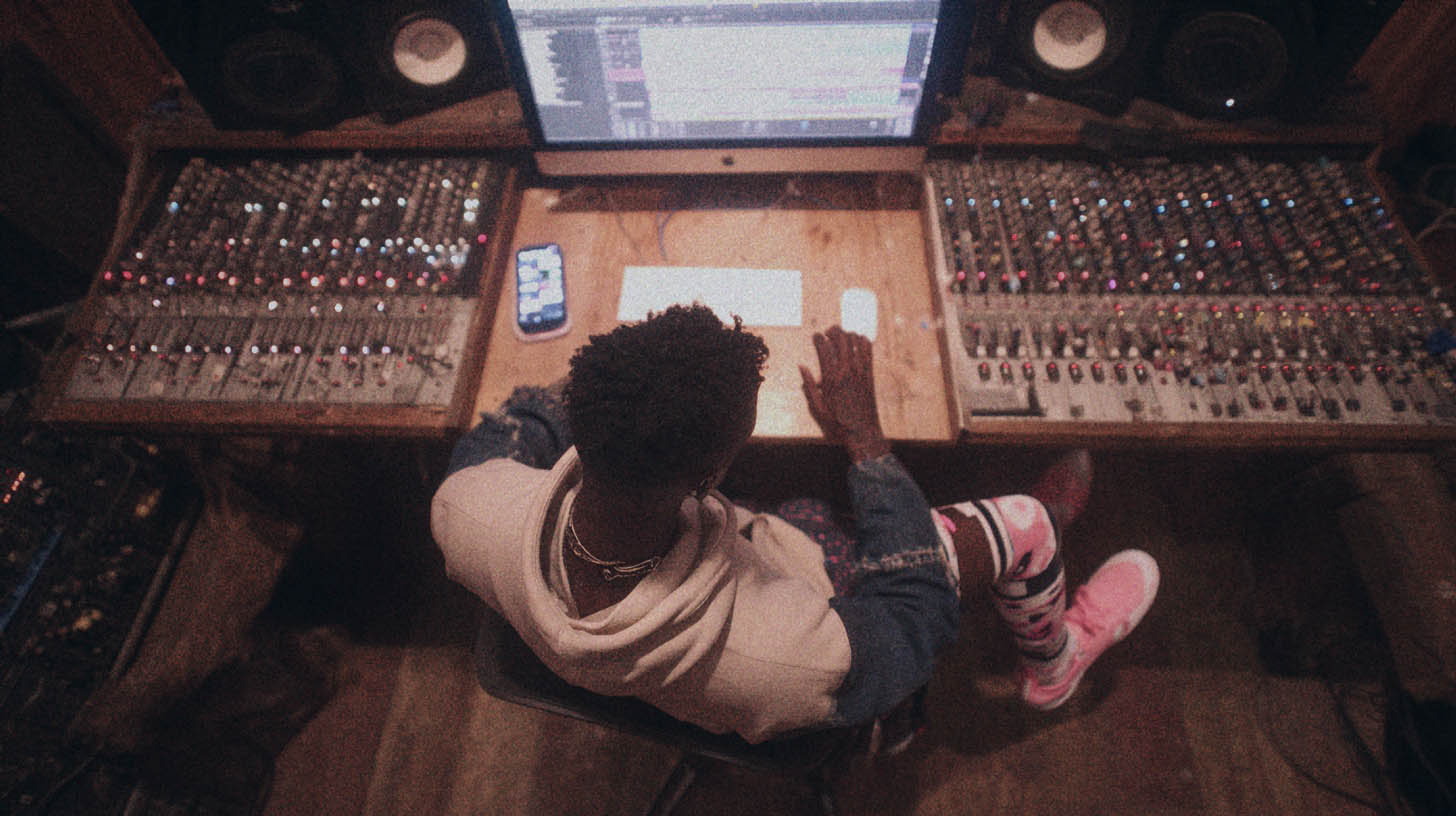
Metal Music Production: Leveraging Today’s Tech for Killer Sound
Nail The Mix Staff
Remember slogging through ancient forums for scraps of info on how your favorite band got that snare sound? Or saving up every dime for studio time only to get a demo that sounded… well, like a demo from a local studio that didn't get metal?
Those days are largely over, man. If you're deep into metal music production, right now is an absolutely insane time to be alive and creating. The internet and the seismic shifts in recording technology have completely blown the doors wide open. This isn't about chasing some rockstar pipe dream; it's about the unprecedented, almost ridiculous access you now have to create professional-sounding, skull-crushing metal, often from your own damn bedroom.
The Home Studio Revolution: Your Command Center for Brutality
Eyal Levi (you know, one of the brains behind Nail The Mix) often talks about how the barrier to entry for quality recording has absolutely plummeted. He's not wrong. That old M-Box or first-gen interface collecting dust in your closet? Today's budget interfaces smoke it, and it's not even close.
Affordable Gear, Pro Results: No More Excuses
You genuinely don't need a six-figure studio budget anymore to make legit-sounding metal.
- Interfaces: Units like the Focusrite Scarlett 2i2, PreSonus Studio 24c, Universal Audio Volt series, or even a MOTU M2 deliver surprisingly clean preamps and solid A/D conversion for a few hundred bucks. You're not tracking through a vintage Neve, sure, but for DI guitars, vocals, and triggering samples? More than enough horsepower.
- DAWs (Digital Audio Workstations): Reaper is a massive favorite in the metal community for its insane customizability, stability, and wallet-friendly price. Pro Tools is still an industry heavyweight, but don't sleep on Steinberg Cubase, Apple Logic Pro X (for Mac cultists), or PreSonus Studio One – they're all incredibly powerful. Honestly, the "best" DAW is the one you can fly around in blindfolded.
- Monitoring: This is crucial. A decent pair of closed-back headphones (Beyerdynamic DT770 Pro 80 or 250 ohm, Audio-Technica ATH-M50x) and some budget-friendly nearfield monitors (Kali Audio LP-6 V2, Yamaha HS5, ADAM Audio T5V) in a reasonably treated room will get you 90% of the way there. And speaking of room treatment, DIY acoustic panels made with Owens Corning 703 or Rockwool are arguably more impactful early on than dropping thousands on monitors in a bad-sounding space.
The In-The-Box Arsenal: Plugins That Punch Hard
This is where the game really changed for home-based metal music production. The quality and variety of plugins available now is staggering.
Amp Sims & IRs: Your Tone Factory
Gone are the days of needing a cranked 100-watt head to get a record-ready guitar tone (though that’s still fun).
- Amp Sims: Neural DSP Archetypes (Plini, Gojira, Nolly, Petrucci – take your pick) are practically ubiquitous for a reason. STL Tones (ToneHub, Amphub) and Positive Grid BIAS Amp/FX 2 offer incredible flexibility and a massive palette of tones. Bogren Digital, Jens Bogren’s plugin company, also has some killer amp sims like the MLC Subzero 100.
- Impulse Responses (IRs): Don't underestimate these! The cab and mic simulation is just as important as the amp head. Companies like OwnHammer, Celestion, York Audio, and Bogren Digital (again!) offer fantastic IRs. Try blending a Mesa/Boogie Rectifier 4×12 IR (maybe a V30-loaded one) with a Marshall 1960B 4×12 IR (perhaps with G12T-75s) using a loader like Two Notes Wall of Sound or STL Ignite Libra for some serious layered beef.
Drum Domination: Samples & MIDI
Let's be real: modern metal drums are often a hybrid affair, if not fully sample-based.
- Drum Samplers: Toontrack Superior Drummer 3 is the undisputed king for realistic, deeply customizable acoustic drum sounds. GetGood Drums (GGD) offers fantastic, mix-ready kits that sound instantly modern and punchy – perfect for all flavors of contemporary metal. Steven Slate Drums (SSD5) is another strong contender.
- MIDI Programming: If you're programming, don't just slam every velocity at 127. Use velocity curves that mimic a real drummer's dynamics. Humanize functions are your friend, but use them sparingly to avoid sloppiness. Tiny, almost inaudible ghost notes on the snare, programmed with varying low velocities, add a ton of realism.
Essential Processing: EQ & Compression That Slams
Your bread and butter for shaping sounds and making them sit in a dense mix.
- EQ: FabFilter Pro-Q 3 is a surgical weapon, perfect for notching out resonant frequencies or making precise boosts. For character, try a Pultec emulation like the Waves PuigTec EQP-1A or Universal Audio's EQP-1A on a kick drum (boost 60Hz, and then attenuate 60Hz with a slightly wider Q for that classic tight low-end thump). High-pass everything that doesn't need deep low-end: guitars often around 80-100Hz, vocals 100-120Hz (or even higher depending on the singer and style). Need to carve out space and make everything fit? Check out our deep dive into EQ Strategies for Mixing Modern Metal.
- Compression: FabFilter Pro-C 2 is a workhorse for transparent control. For aggression, a Waves CLA-76 (an 1176 emulation) on parallel vocals or a snare top mic can be devastating (all buttons in, anyone?). On your drum bus, try a VCA-style compressor plugin like the SSL G-Master Buss Compressor (or its many emulations from Brainworx, Waves, or Slate Digital) with a slow attack (around 30ms) and fast release (around 100ms or auto) for punch and glue. Mastering heavy compression is key, and you can learn more beyond just "making it loud" on our Metal Compression Secrets hub page.
Your Vision, Your Rules: From Demo to Release
The old model of writing songs and then hoping a label or producer "gets" your vision is fading fast.
As Eyal often points out, guys like Buster Odeholm (Humanity's Last Breath, Vildhjarta, and producer for bands like Sworn In) and the legendary Devin Townsend have built entire careers by taking meticulous control of their production, often starting in humble home setups. You have the power to craft your sound from the initial riff to the final master (and it’s key to understand the distinct roles of mixing vs. mastering along the way), or at the very least, be a deeply informed and active collaborator if you do choose to work with an outside producer or mixer.
Next-Level Metal Production: Smart Tech for Brutal Sounds
It's not just about having access to the tools; it's about deploying them intelligently to achieve that polished, powerful, and undeniably modern metal sound.
"Natural" vs. "Modern": What Metal Really Needs
Ever had a bandmate insist they want "all-natural drums" but then hands you a Periphery or Meshuggah track as a reference? Eyal's seen that scenario play out countless times. What they really mean is they want a modern, impactful, and clear sound, which often involves techniques that aren't strictly "natural."
Strategic Drum Editing & Replacement
In most subgenres of modern metal, tight drums are non-negotiable.
- Editing: Quantizing MIDI is a given. For live-tracked acoustic drums, Pro Tools' Beat Detective, manual slip editing, or tools like Synchro Arts' VocAlign (yes, for drums too!) or Drumatom are crucial for aligning hits precisely.
- Sample Replacement/Augmentation: Slate Trigger 2 is practically an industry standard for this. Blend your well-recorded snare top mic with a punchy, consistent sample (like one from the Joey Sturgis Tones Conquer All series or a GGD kit). Eyal's trick of using a kick pad (like a Roland KD-10 or even a simpler mesh head trigger like a ddrum Red Shot) for tracking drummers whose kick drums will inevitably be sample-replaced is genius. It drastically cleans up kick bleed in your overheads and room mics, lets the drummer focus their energy on a powerful hand performance, and gives you a perfect MIDI trigger signal for your samples.
Vocal Perfection (Without Sounding Like a Robot)
Melodyne or Antares Auto-Tune Pro are standard tools in any metal producer's kit.
- The key is subtlety (unless you're going for that overtly processed T-Pain effect, which is rare in metal). Aim for pitch correction and consistency, not an obvious, distracting "tuned" sound.
- Aligning vocal doubles and harmonies tightly using tools like VocAlign or Revoice Pro is just as important as pitch for that massive, unified vocal wall. iZotope Nectar also has excellent tools for pitch and alignment.
The Power of Re-amping & Profiling Amps
Tracking DI (Direct Input) guitars using a quality DI box (like a Radial J48, Countryman Type 85, or a Little Labs Redeye 3D) is an absolute lifesaver. You gain the flexibility to endlessly tweak your guitar tone after tracking.
- Kemper Profiling Amps, Fractal Audio Axe-Fx III, Line 6 Helix – these units have revolutionized how guitarists and producers approach tone, both in the studio and live. As Eyal mentioned from his own experience, getting a Kemper early on was a game-changer for maintaining tone consistency across sessions, easily re-amping guitars if the initial tone wasn’t quite right, and allowing bands to take their exact studio tones on the road. Imagine profiling your perfectly dialed-in Peavey 6505+ slamming into a Mesa 4×12 with Celestion Vintage 30s, mic'd with a Shure SM57 and a Royer R-121 – and having that exact setup available at the click of a button, anytime.
The Education Highway: Learning from the Best
Forget spending weeks digging through contradictory advice on decade-old forum posts. The internet is flooded with tutorials (some great, some… let's just say "questionable").
But for structured, pro-level insight straight from the source? That's where platforms like Nail The Mix come in. Imagine being a fly on the wall, watching how Will Putney gets those face-melting Fit For An Autopsy guitars, or how Jens Bogren makes bands like Opeth or Arch Enemy sound so goddamn epic – directly from them, with the actual multitracks from the record. It's like having an all-access backstage pass to their brains and workflows.
The Modern Metal Producer's Mindset: More Than Just Gear
Having all the latest plugins and a tricked-out computer is one thing; cultivating the right approach and mindset is arguably even more critical.
Conquer Imposter Syndrome: It's You vs. You
Eyal touches on a very real phenomenon: seeing an endless Instagram feed of mind-blowingly talented musicians and producers can be seriously intimidating. It's easy to fall into the trap of feeling like you're not good enough or that you'll never catch up.
The truth is, everyone starts somewhere. The only useful comparison is you today versus you six months ago. Focus on your progress, your learning, and your music. Use those killer records by Andy Sneap, Adam "Nolly" Getgood, or Forrester Savell as references and inspiration, not as a stick to beat yourself with.
The Renaissance Metalhead: Wearing Many Hats
The lines between "musician," "songwriter," "engineer," and "producer" are blurrier than ever, especially in metal.
Understanding song arrangement, harmonic structure, rhythmic interplay, and even basic music theory will make your productions infinitely better. If the source material – the song itself and the performance – is weak, no amount of fancy plugins or mix wizardry will truly save it. Eyal's classical music upbringing, for instance, gave him a deep, intuitive understanding of musical form and dynamics, which undoubtedly informs his production choices. You don't need to be a Juilliard graduate, but broadening your musical horizons beyond just your instrument will pay huge dividends.

100+ Insanely Detailed Mixing Tutorials
We leave absolutely nothing out, showing you every single step
Why You Can't Afford to Stagnate in Music Production
The sonic landscape of metal is constantly evolving. What sounded cutting-edge five years ago might sound a bit dated today.
Keeping Pace: Modern Sounds for a Modern Scene
Listeners, especially those deeply entrenched in metal subgenres, have become accustomed to a certain (very high) level of production quality. Punchy, clear drums, aggressive yet defined guitars, an audible and supportive bassline, and well-placed, intelligible vocals are the baseline expectation.
As Eyal often says, if you're not actively working to keep your skills and sounds current, you risk getting left behind – even by the people who claim they prefer "old-school" sounds. Often, what they truly desire is the feeling or vibe of older music, but with the clarity, power, and polish of modern production.
Studio Skills on Stage: Enhancing the Live Experience
Your music production knowledge directly translates to, and can massively enhance, a band's live show.
- Bands are increasingly using sophisticated backing track setups (running synths, orchestral layers, extra vocal harmonies, and click tracks for the drummer) often managed from Ableton Live or similar software.
- Guitarists and bassists using Kemper, Axe-Fx, or Helix units can bring their meticulously crafted studio tones to the stage with perfect consistency, night after night.
- Vocalists benefit immensely from well-mixed in-ear monitor feeds, allowing them to perform better and save their voices. It all contributes to a tighter, more powerful, and more immersive live experience, and that foundation is built on solid production understanding.
Conclusion: Your Time Is NOW
So, yeah, to put it mildly, it’s an incredible time to be involved in metal music production. The tools are more affordable and powerful than ever, the knowledge is readily accessible, and the internet provides a direct conduit to connect with an audience, bypassing traditional gatekeepers.
The biggest hurdle isn't a lack of money or access to expensive studios anymore; it's your own skill, dedication, and your willingness to learn, experiment, and adapt. Eyal Levi's journey and insights consistently underscore this fundamental truth: if you put in the focused work, you can make things sound great, you can achieve your artistic vision, and you can carve out your unique place in the vast and vibrant world of metal.
Ready to stop just dreaming about killer mixes and start actually making them? If you're serious about leveling up your mixing game and learning directly from the world-class producers who are shaping the sound of modern metal, check out how Nail The Mix can help you unlock your sound and mix modern metal beyond presets. The power is in your hands.
Get a new set of multi-tracks every month from a world-class artist, a livestream with the producer who mixed it, 100+ tutorials, our exclusive plugins and more
Get Started for $1




